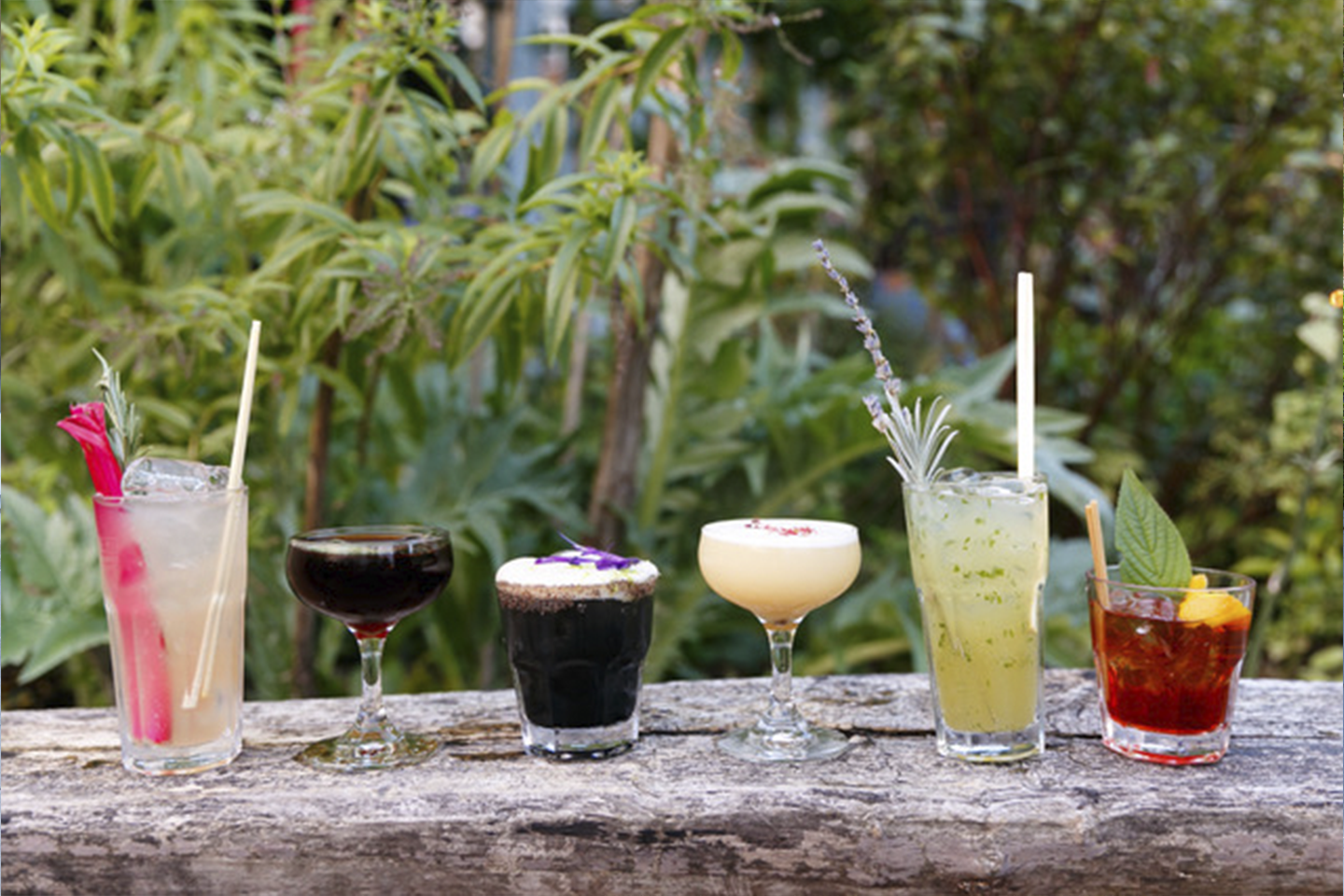
Fresh, home-grown herbs – aromatic, decorative and bursting with flavour – are as essential for cool summer cocktails as they are for the barbecue or pizza oven. Grow several in troughs or large, same-size pots that will look great on the patio as well as provide a veritable bouquet of flowers, foliage and fronds to snip and savour. Which herbs to choose? Borage is easy to grow from seed pushed directly into the compost or into the ground, and the resulting sky blue flowers are the classic addition to plop into Pimms, along with cucumber. Basil, of course, makes the perfect final flourish for a bloody Mary, while mint is a must for cooling juleps.
But if you really want to impress your guests and appeal to all your senses, take tips from botanical mixologist Lottie Muir, aka The Cocktail Gardener. For four nights a week she sets up the bar in the roof garden she created above London’s Brunel Museum in Rotherhithe and, to the delight of the Midnight Apothecary’s punters, creates sensational plant-powered concoctions that have the flavours and fragrances of nature mixed with the kick of a cocktail.
“Just one windowbox of rosemary, lavender and scented geraniums will give you some great basics for infusions, syrups and garnishes,” advises Lottie, who uses rosemary stems as aromatic swizzle sticks in G & Ts and Camparis, as well as bashing the foliage with the back of a wooden spoon to shake it up with campari, gin and sweet vermouth for a knockout Negroni. And why buy flavoured gin when you can customise your own? Lottie suggests infusing eight lavender heads – at their most aromatic when still in bud – into a 700ml bottle of gin, and leave it for a couple of hours. “We mix it with pear puree and add tonic water or soda.” And if you just want an instant pimp for your G & T, Lottie suggests weaving the fronds of bronze fennel into a tall glass of ice cubes before adding the gin, tonic and a twirl of lemon, so the result looks like seaweed swirling in a rock pool.
The fragrant, velvety leaves of rose geranium she infuses in sugar to make a sweet, frosted rim around a glass, and picks the leaves of lemon geranium to flavour a zingy limoncello made from vodka, lemon zest, sugar and lavender buds. “You can also simply drop the leaves into water, leaving for 24 hours for the flavour to infuse the water, or add a handful of leaves to gin or vodka.”
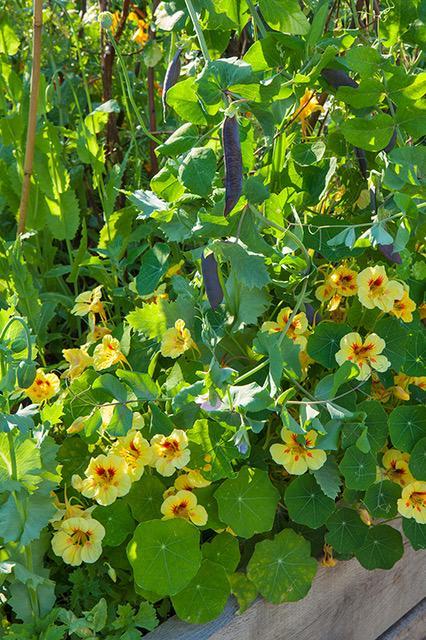
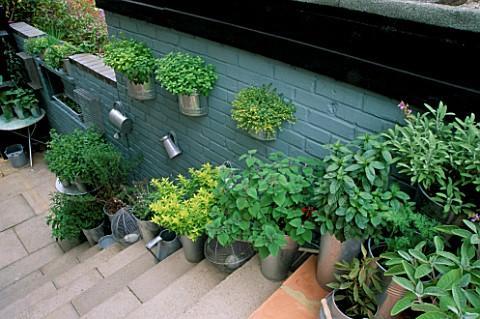
Nasturtiums, aside from their great good looks, are wonderful in cocktails because of their peppery taste. “Infuse the leaves and flowers in golden rum or tequila, making sure they’re submerged. You can do the same with the seeds, so they taste like caper berries. The flavour will come through within 24 hours.” You could also try a Nasturtium Paloma, which is a luscious mix of pink grapefruit juice and nasturtium tequila, garnished with the leaves and petals. Flowery garnishes look their finest when they’re floating on top of a cocktail rather than sinking soggily to the depths, which is why Lottie suggests adding an egg white into the cocktail shaker to make a foamy float for flowers or berries which has a lovely, creamy feel in the mouth.
Sorrel, with its tangy taste, adds a great sour lemon note. You just smack a leaf between your palms – a better technique for muddling, says Lottie, because bashing with a wooden spoon makes the leaves bitter – and drop it into a G & T or vodka and tonic. “It’s such a delicate taste that using it in gin or vodka will allow the flavour to come through.”
Common or garden mint is compulsory for muddling into mojitos and juleps, but you could experiment with more unusual varieties, perhaps using the furry leaves of apple and pineapple mints for garnishes, or growing chocolate mint so you can indulge in a chocolate mint julep: “Make a syrup from equal parts of sugar and water, then take it off the boil and drop a cupful of mint into the syrup, then letting it cool down. Pour the syrup into the glass, fill with ice and add bourbon through the ice.”
Like mint, lemon balm needs its own container or it will run riot, but is worth growing to use the bright green leaves instead of mint in a mojito. Alternatively, lemon verbena smells gorgeous and adds a taste of lemon sherbet, says Lottie. “Muddle it with gin, straining it with a sieve and then a strainer, and adding a tiny bit of lemon juice. If you’ve got a good gin, and you add some fresh strawberries and lemon verbena, you’ve captured the taste of summer.”
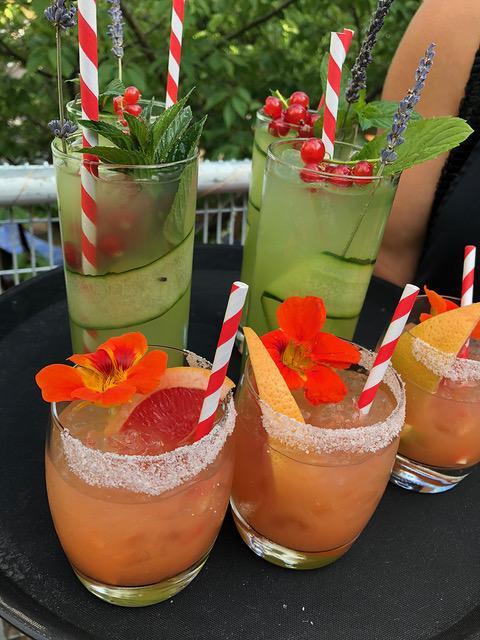
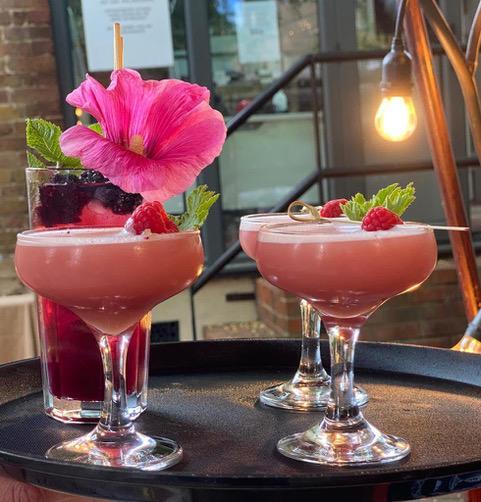
HOW TO GROW HERBS FOR YOUR SUMMER COCKTAIL BAR
* Plant several different herbs in a windowbox or trough for easy access, or gather together several terracotta pots and plant one variety in each. Mint, borage and lemon balm should be planted separately to keep them contained.
* Add drainage material to the base of containers to give plants the sharp drainage they need.
* Plant in multi-purpose compost and finish with a topdress of grit or gravel which will help retain moisture.
* Water daily through hot periods and dose with a dilute seaweed feed once-weekly, but don’t overwater or overfeed.
* Keep snipping and picking to keep the herbs bushy and your cocktails delicious.
For details on The Midnight Apothecary, see themidnightapothecary.co.uk